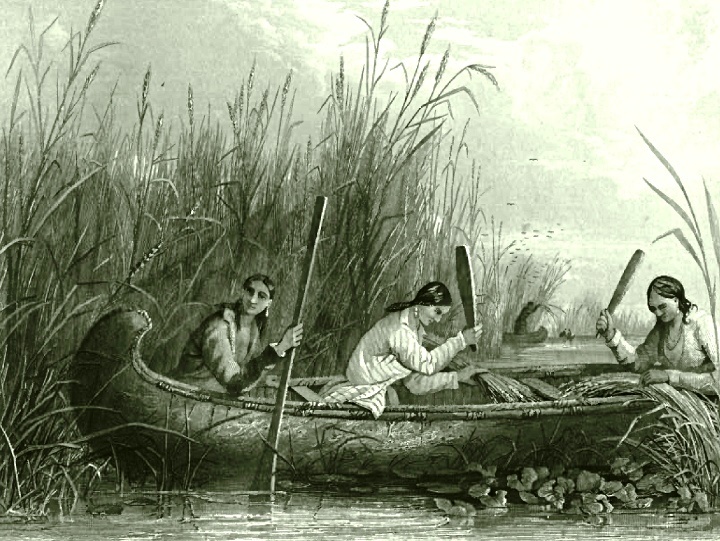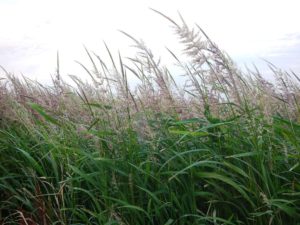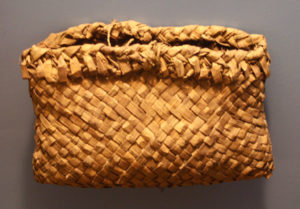A NOAA-supported project to map Lake Superior locations of wild rice—and restore its cultivation in areas where it has been lost—is intended to help revitalize and preserve the cultural legacy of the region’s Native Americans.
Oral tradition says a prophecy was fulfilled when the Anishinaabeg—also known as Chippewa and Ojibwe people—left their East Coast home and found abundant wild rice growing in Lake Superior’s wetlands.
Wild rice, known as manoomin, is one of the first foods the Anishinaabeg feed their babies, and is a traditional dish for funeral mourners.
Many factors have disrupted tribal harvests, but NOAA’s Office for Coastal Management is working to preserve and restore wild rice through workshops, data mapping, funding, and education.
Projects in Minnesota, Wisconsin, and Michigan’s Upper Peninsula are moving ahead because of two 2017 workshops funded by the Great Lakes Restoration Initiative, and administered by NOAA’s Office for Coastal Management:
- A participatory mapping exercise combined tribal knowledge of wild rice locations with land cover data from NOAA’s Digital Coast to pinpoint where partners should focus data collection and monitoring;
- Workshop participants selected six pilot locations where imagery and data will be collected. Pilot funding recipients are the 1854 Treaty Authority, Bad River Band of Lake Superior Chippewa, Grand Portage Band of Lake Superior Chippewa, Keweenaw Bay Indian Community, Red Cliff Band of Lake Superior Chippewa, and St. Croix Chippewa Indians of Wisconsin;
- Outreach and education led by state Sea Grant organizations include displays and an online wild rice database;
- Wild rice camps led by tribal groups educate people on harvesting, cooking tips, and regulations;
- Efforts underway to fund tribal agencies and communities will uncover new findings on procuring and restoring wild rice, understanding its cyclical seasons, and making it more resilient; and,
- A team led by ABT and Associates is assessing the cultural value of wild rice to the Anishinaabeg and quantifying the ecological value and functions of manoomin waters.
The Office for Coastal Management administers the data and imagery funding. Minnesota’s Lake Superior Coastal Program and the Wisconsin Coastal Management Program take part in data, partnership, and workshop efforts.
The Lake Superior National Estuarine Research Reserve attends workshops and hosted a workshop studying the manoomin culture and ecosystem.
In the works is a project that will extend manoomin restoration into Lake Huron and Lake Michigan basins. It will be funded by the Great Lakes Restoration Initiative and administered by the Office for Coastal Management. (2019)
Wild rice restoration initiative partners include: ABT and Associates, the 1854 Treaty Authority, Great Lakes Indian Fish and Wildlife Commission, Lake Superior National Estuarine Research Reserve, Michigan Department of Environmental Quality, Michigan Department of Natural Resources, Michigan Department of Transportation, Michigan Sea Grant, Minnesota Lake Superior Coastal Program, Minnesota Sea Grant, NOAA Office for Coastal Management, University of Wisconsin-Extension, U.S. Bureau of Indian Affairs, U.S. Fish and Wildlife Service, U.S. Geological Survey, U.S. Environmental Protection Agency, Wisconsin Coastal Management Program, Wisconsin Department of Natural Resources, and Wisconsin Sea Grant.
Featured image shows 19th Century tribal women harvesting wild rice in the traditional manner. Courtesy of the American Aboriginal Portfolio, by Mrs. Mary H. Eastman. Illustrated by S. Eastman. Philadelphia: Lippincott, Grambo & Co. 1853.



